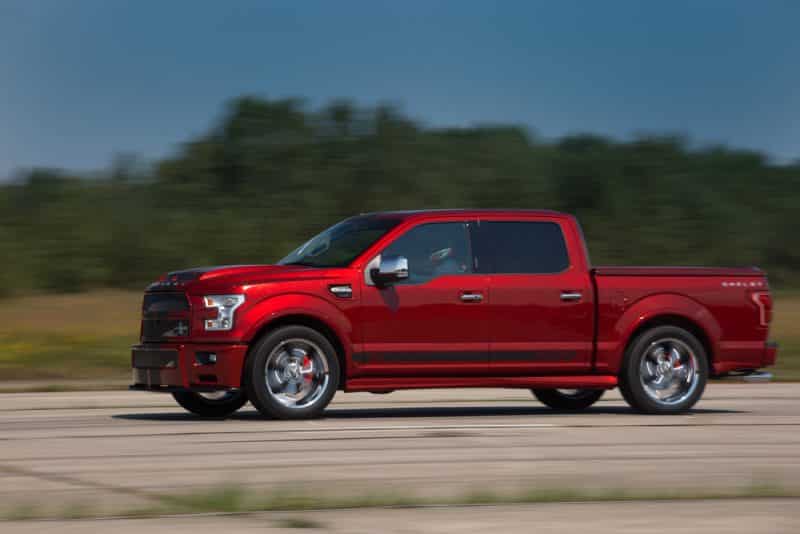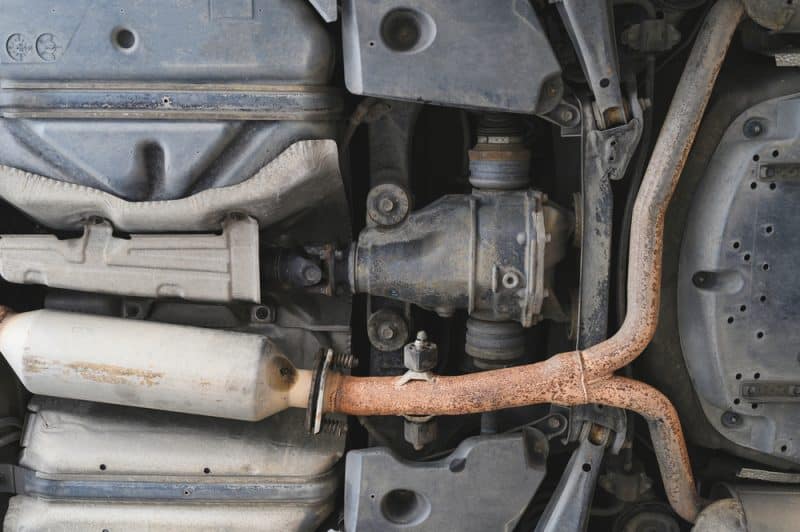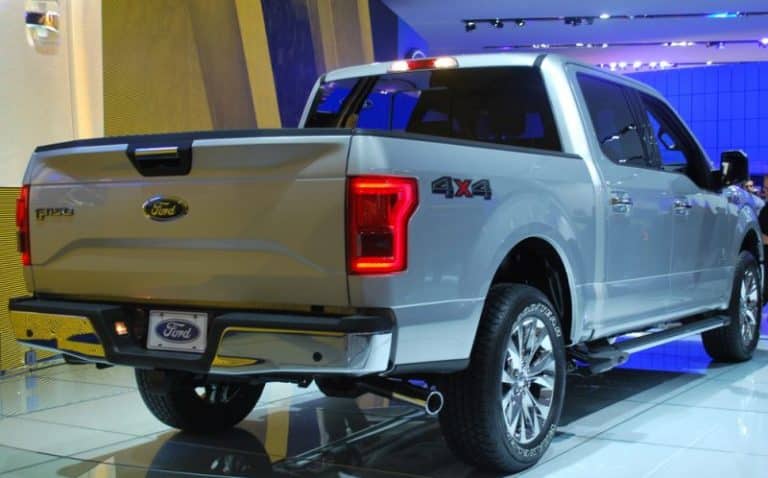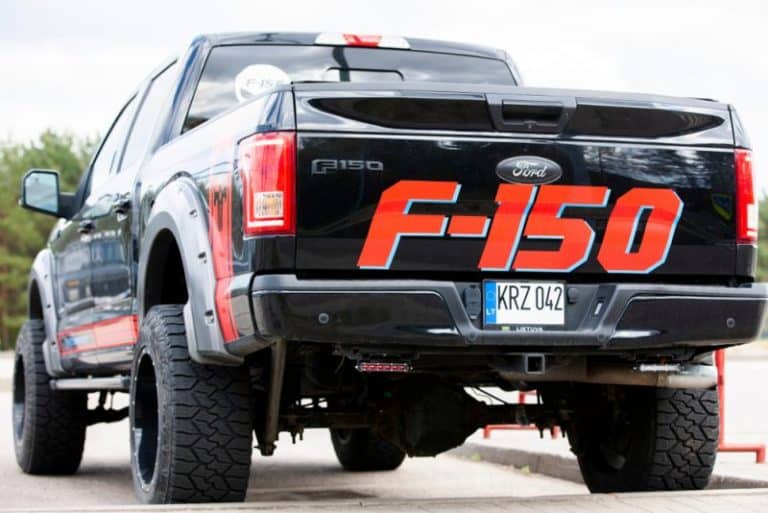Does Ford F-150 Have A Limited-Slip Differential?
Have you ever wondered how you enjoy a smooth ride on your Ford F150, even at different speeds? Do you know of a system that keeps you running at the same pace even when you change your speed?
This article will tell you all you need to know about the limited-slip differential.
The Ford F150 has a limited-slip differential. The limited-slip differential intends to keep the wheels running equally at different vehicle speeds due to an abrupt change in travel. So speed, both tires may respond differently in such conditions. The limited-slip differential acts to normalize the speed at all tires.
Does Ford offer a Limited-Slip Differential?

Ford offers a limited-slip differential on a range of its automobiles. The limited-slip differential directs the torque, which allows the vehicle to navigate through difficult terrain and bends.
This system is automatically controlled, is active at all times, and does not require any input from the driver.
What is a Ford Limited-Slip Differential?
A limited-slip differential is a system of gears that enables a vehicle’s tire to run at regulated speeds at a different pace from the car.
The Ford limited-slip is an improvement over the wheel and axle system, which allows the vehicle to drive over terrain that a conventional wheel and axle system cannot.
This terrain includes rough terrains or roads that the driver may have to navigate by engaging at different speeds.
A differential is a gear system with drive shafts that works with the rotational speed of one of the shafts as the average speed of the other two.
It helps to maintain traction on a driving system when the speed of the car changes or the direction of the wheel ought to change.
For example, when cornering your car to navigate a bend, the inner wheels do not travel the same distance and speed as the outer wheels.
The inner wheels usually travel a shorter distance than the outer wheels. This difference in speed causes the inner wheel to rotate too quickly, relating to the outer wheel.
Conversely, the outer wheel may also rotate too slowly than the inner wheel. This type of discrepancy can happen when there is no differential in place.
The differential helps to make this pair of wheels rotate at different speeds without having to cause damage to the tires.
The limited-slip differential is a special type that allows the wheels to turn at different speeds while minimizing the difference in these rotations.
The Ford limited-slip differential works with the traction control system of your car. The slip traction system helps to keep the car running smoothly when you change speed or seek to negotiate a bend abruptly.
What this means in simpler terms is that your Ford F150 car uses a system of complex gear mechanisms, which is the Ford limited-slip differential.
As a result, your tires are not equally connected to the engine whenever you drive. Instead, one set is connected closer to it via the shaft, and another is far away from it.
This distance makes them respond separately to changes in speed and terrain. Therefore, there is a loss in traction with some consequences.
Now, the slip differential of Ford minimizes this difference in rotation to the barest minimum while maintaining that difference for the car to run smoothly.
This operation system keeps the Ford F150 on the road with the tires’ balanced yet controlled motion whenever you engage new speeds or terrain.
How Does a Ford Limited-Slip Differential Work?
Knowing that Ford’s limited-slip differential utilizes a mechanism to reduce the individual spin of the wheels, how do they work?
They work by shifting a portion of the torque to the wheel with the highest traction while it reduces the slip on the wheel with the lowest traction.
This process of torque-shifting means they practically sense where the torque on the wheel is located and tend to balance it based on the prevailing speed and terrain of the car.
This mechanism allows the wheels to turn at different speeds, but it would control that difference to the nearest possible limit.
The torque that is being shifted or applied by the limited slip resists the relative motion of the output shafts.
This relative motion of the output shaft is the cause of the difference in the rotation of the tires.
Once this relative motion of the output shaft is resisted, the difference in rotation of the tires reduces.
The main benefit of fitting a car with a limited-slip differential is to improve the driving experience.
In the case of Ford, the use of an electronic sensor to alert the car on when to apply the brakes to a rotating wheel so that the car’s power delivery is in check or reduced.
The Ford F150 also uses an electronic limited-slip differential which receives input from sensors that monitor the rotation of the wheels.
These sensors can quickly determine the rotational difference and then apply the torque to it. The electronic censored limited-slip differential works pretty much like the limited-slip differential.
An electronically limited-slip differential uses the precision of computer technology to provide the needed traction that can boost the performance of your Ford F150 whether you are driving on rough terrain, slippery ground, or you are navigating through a sharp bend.
How Do I Know if My Ford F150 Has a Limited Slip?

Finding the vehicle certification plate is one way to find out if your Ford F150 has a limited-slip.
This number is usually written on the hinge of the driver’s door as a sticker pasted on the inside of the door.
However, there are other sets of numbers besides the vehicle certification code. These numbers are the axle code of your Ford F150.
You can trace the number using a chart to cross-reference and confirm if it is a limited-slip or not.
This chart will tell you whether your Ford F150 has a limited-slip or not, and there is other information that you can find concerning your limited differentials like the type, the color, the date it was made, and many more.
One other way to find out is to locate the axle on the differential cover bolt. A number written on the lower left-hand corner is the gear ratio.
The alphabet written beside the number determines the type of differential in place. For example, a number labeled “L” alongside a limited-slip differential.
Yet another way to find out is by having the Ford F150 elevated at the back by a jack. Then allow the wheel to have a neutral turn. When the wheels begin to spin, observe them.
When both wheels spin in the same direction, then what operates in your vehicle is the limited-slip differential.
However, when both wheels spin in the opposite direction, you do not have a slip differential operating in your vehicle.
You are most likely to find the limited-slip differential on your Ford F150. By design, your car comes with an electric locking differential.
This limited-slip differential uses an electric system to detect the changes in the spin of the tires and, after that, minimizes the difference in the spin.
Conclusion
The Ford F150 has a limited-slip differential that minimizes the differences in rotation in the individual tires. Ford offers a limited-slip differential to optimize the driving experience.
The limited-slip differential works by directing torque from the wheel that spins more, thereby providing resistance.
You can determine whether your differential is a limited-slip by checking the number on the sticker placed inside your driver’s seat.






